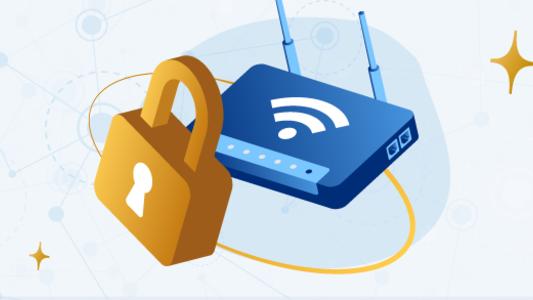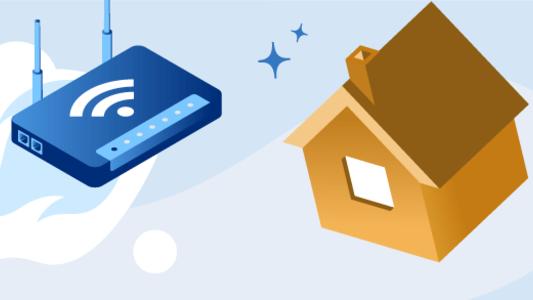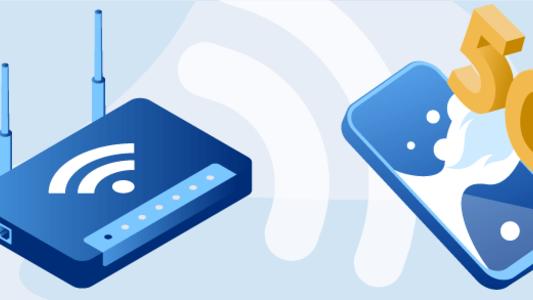How To Increase Broadband Internet Speed For Work From Home
We've all been through the period when the internet is intermittent and everything goes into chaos. It is possible that the issue is caused by the internet service provider, but there are instances when the problem is caused by the router's location and other factors. Having said that, the latter issue may be resolved by following a few easy actions. Continue reading this blog to know the tips and tricks on how to increase internet speed.
Ways To Increase Internet Speed
If you are wondering how to increase speed in laptops, let’s go through these subpoints to learn more.
Identifying The Most Responsive Server
It is necessary for a browser to resolve the DNS name of a local webserver to the IP address of your machine in order for it to be able to create an Internet connection. DNS servers are the main intermediates that connect your system to nearly all of the resources that are dispersed across the world wide web.
It is critical to ensure that the DNS server you choose is the quickest possible one available in your area—a job that your Internet service provider does not care to do on your behalf.
Since many DNS servers are available for public use, figuring out the software that determines which is the fastest available is quite difficult.
Increasing The Speed Of Your Internet Connection In Windows
A trove of under-performing Windows Internet settings inside your machine that, in addition to providing outward-reaching remedies for Internet performance optimization, is in desperate need of improvement.
This is true regardless of how young your operating system is; when these hidden settings are properly configured, the difference in your Internet experience may be substantial.
Changing The Size Of Data Packets
Packets of data are used to transport information over the Internet. It is possible to improve the efficiency of this process by determining how big (in bytes) a data packet may be for a particular network before it must be split up in order to be sent. This number, which is often set by your router, is referred to as the Maximum Transmission Unit (MTU).
How Much Internet Do You Need To Work From Home
In order to get a better understanding of how to increase your broadband speed, let's first understand what factors impact the speed of your internet:
- Download speeds: Download speeds indicate how quickly you can obtain information on the internet. Faster download rates will speed up the loading of your web pages, Netflix videos, and business email
- Upload speeds: This indicates how quickly you can upload data to the internet. Faster upload speeds will not only attach that PDF to your email in a flash but will also maintain your lovely grin appearing picture-perfect during your Zoom session.
- Data: Data is used in everything you do online, with streaming and downloading huge files often consuming the most data overall. Most internet service providers enable you to utilize at least one terabyte of data every month, while others go so far as to give unlimited data.
Internet Speeds Used By Popular Work From Home Apps
Every app requires a certain amount of bandwidth to work, hence, the heavier the app, the more data it will consume. Here's a breakdown of the most popular applications and how much data they use on average.
| Apps | Average Download Speed | Average Upload Speed |
|---|---|---|
| Zoom | 1.2–3 Mbps | 1.2–3 Mbps |
| Slack | 200 Kbps - 400 Mbps | 100 Kbps–600 Kbps |
| Skype | 30 Kbps–8 Mbps | 30 Kbps–1.5 Mbps |
| Google Hangouts | 18 Kbps–3.2 Mbps | 12 Kbps–3.2 Mbps |
Checklist To Enjoy Maximum Broadband Speed Working From Home
Whether you are looking to Increase Internet Speed In Jio or Airtel or any other service provider, there are certain practical tips that you can adopt to enjoy maximum broadband speed. Here is a checklist you can follow before you call for professional assistance.
1. Make certain that you are receiving the speeds for which you have paid
Most internet providers offer 'unlimited speed,' but that is usually 'limited' due to some cap limits. Run an internet speed test on your device to see how fast it is. You may check your internet speed using a website such as Speedtest.net or Google's internet speed test to determine whether you're receiving more or less the same speed as promised by your internet service provider in your service plan.
You should check with your Internet service provider to see if there's an issue on their end. If there isn't an issue with them, it's possible that they are defrauding you from your money by providing a substandard plan.
2. Upgrade the router on your network
If your router is more than five years old, upgrading to a new one may significantly improve performance. Consider purchasing a dual-band router, or even a triple-band one if possible, and taking advantage of the 5GHz channels
3. The Router should be in the center of the room
Another alternative is to use a mesh router, which is quite handy. If at all feasible, locate the router in the center of your house, so that it is equally accessible from any room where you need an Internet connection.
Another option is to get a network router that works with a mesh network, which utilizes many nodes that you may place throughout your home rather than just one router in the center.
4. Change to a less busy channel if necessary
Your router has the capability of transmitting on a number of distinct channels, each of which has its own bandwidth space available to it. Changing the channel from "Auto" to one of the other channel choices should resolve any connection problems you're experiencing. You may access the router's settings (typically via a mobile app or by entering your IP address into a web browser) to make this change.
5. Check to see if anybody is using your bandwidth without your permission
Anyone who uses your Wi-Fi network without your awareness may be able to access your data without your knowledge if you use a weak Wi-Fi password or no password at all. Perhaps your internet connection is slow because other people are utilizing your Wi-Fi signal, which leaves less for you.
6. Check that your router is utilizing WPA2 security and that the password is strong
You may also see whether "client devices" are connected to your network by visiting the settings page of your router or using the router's mobile app. If you don't recognize some of the people on the network, you may throw them off and then change your Wi-Fi password to something more secure.
7. Increase the size of your broadband internet bundle
Many internet service providers offer more bandwidth than you typically need - if you're receiving 20Mbps or more, increasing won't make much of a difference unless you have very high data requirements. However, if your internet plan is small, such as 5Mbps, you should consider upgrading since adjusting your router is unlikely to result in significant speed improvements with such a sluggish package.
Frequently Asked Questions
Is 200 Mbps sufficient for working from home?
Working from home will require at least 200 Mbps of the Internet. Video conferencing will be crystal clear, texts and email should download almost instantly, and internet conversations should have extremely minimal latency or delay.
What is the strongest Wi-Fi password?
Passwords should be at least 8 characters long and contain a combination of capital and lowercase letters, digits, and special characters (!@#$%). The more difficult the password, the longer it will take a brute force attempt to guess it. Make a mnemonic device to help you remember your passwords.
What is the minimum broadband speed required by Netflix, YouTube, and Amazon Prime for Ultra HD?
If you want to watch Ultra HD content, you'll need at least 15Mbps for YouTube, and 25Mbps for Netflix or Amazon Prime Video to avoid buffering.






